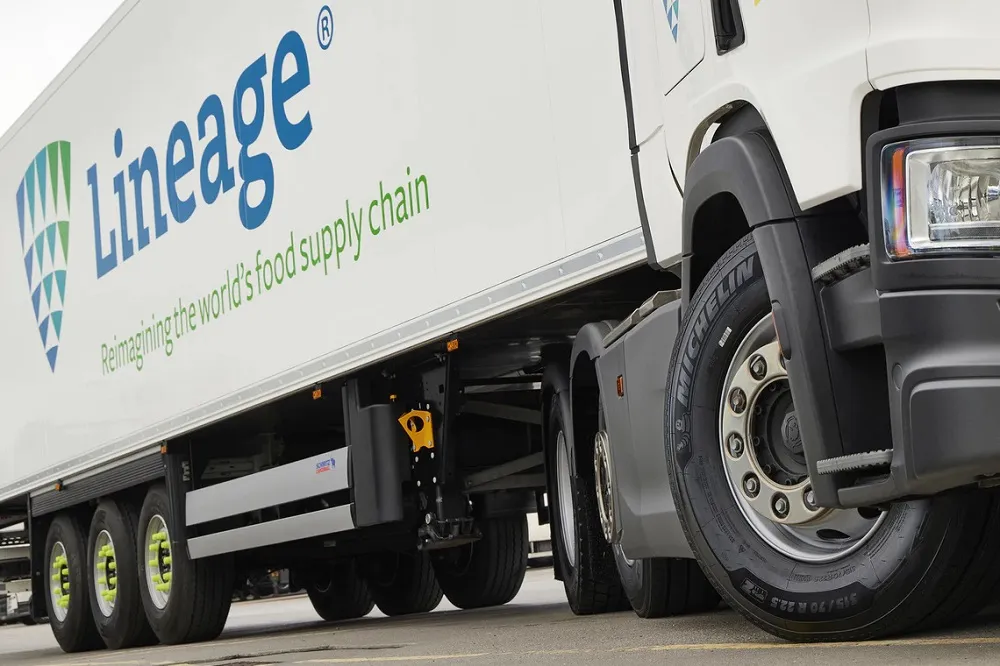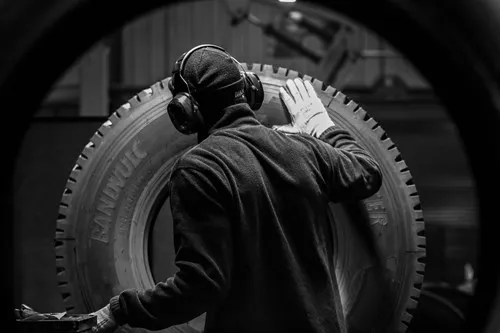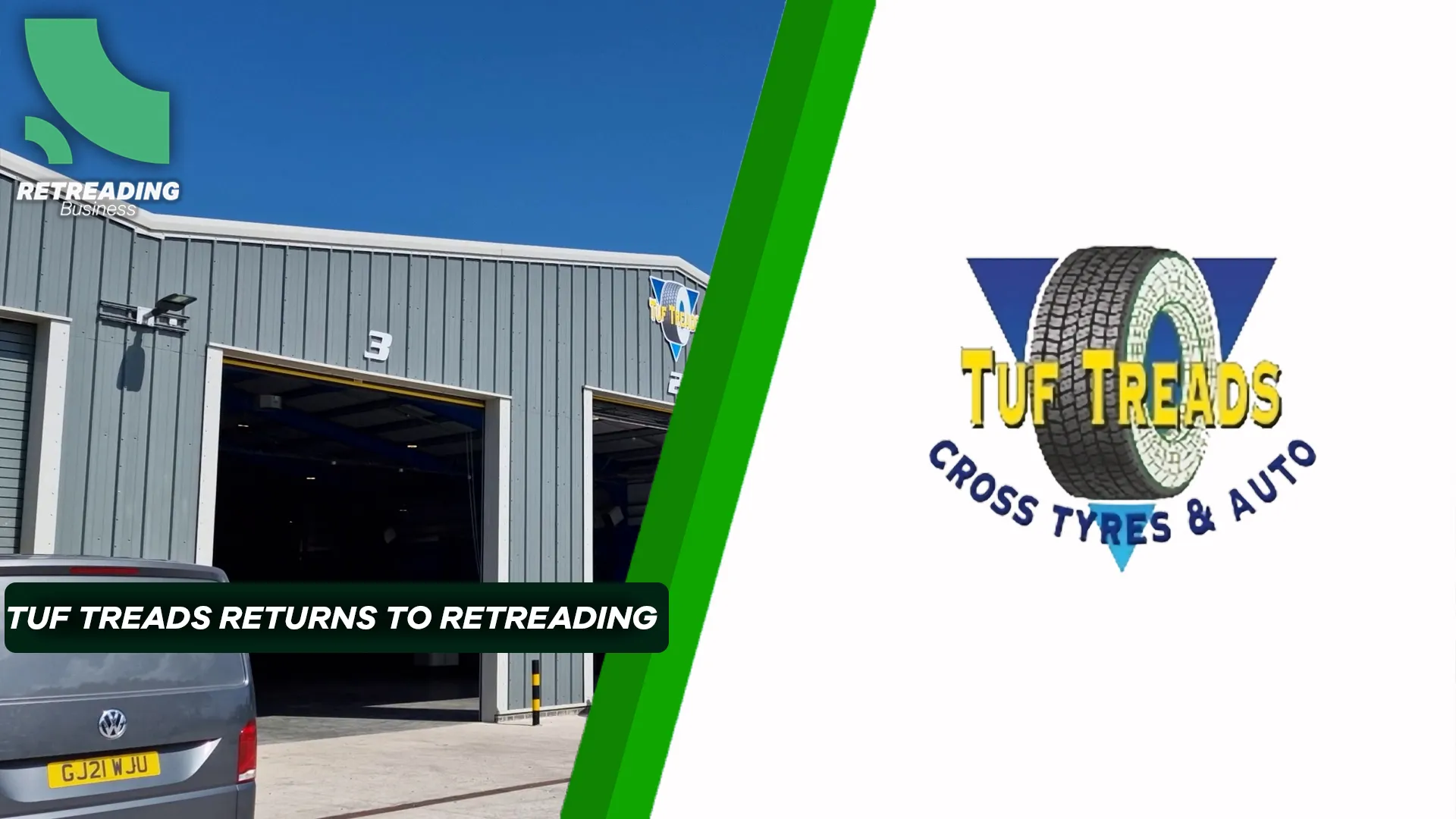Around 30 million truck tyres have been given a new lease of life by retreading at the Michelin plants in Homburg and Stoke-on-Trent (UK), since the late 1960s.
Michelin has been Retreading for 100 Years
30 million tyres given an extended life. This corresponds to 2.1 million tons of raw materials saved and almost 3.5 million tons of CO2 that did not end up in the environment. The environmental balance of the retreading of truck tyres is therefore impressive. “Retreading is a more sustainable and environmentally friendly process than new tyre manufacture and is an integral part of Michelin‘s fleet and fleet offering.
“Our customers expect economical solutions that show them cost savings and support them in making their contribution to sustainable transport. We offer innovative solutions and services for this,” says Philipp Ostbomk, Vice President Sales B2B Europe North.
Since the company was founded, Michelin has contributed to progress in mobility with numerous innovations, especially in the transport industry. As a pioneer in the retreading of truck tyres, Michelin set an example for sustainability as early as 1923: In this way, they were able to extend the service life of the tyres – for more resource conservation and at lower costs. Thanks to their quality, Michelin tyres are easier to repair and retread.
The next innovation followed in 1930 with Michelin Metalic: Instead of textile layers, the company used metal belting in the tyres for heavy vehicles, which were much more resistant to the effects of the road. And thanks to the more robust construction, they could be retreaded up to three times.
Excellent Eco-balance
Retreading truck tyres offers a lot of savings potential: Because a retreaded tyre lowers the overall operating costs of trucking companies and fleets. The tyre can thus increase its mileage by 100 per cent and is on average around a third cheaper than an equivalent new Michelin tyre. In addition, the ability to be recut is retained thanks to the Michelin Remix process. This procedure increases the mileage per regrooving process by an average of another 25 per cent, and also reduces the fuel consumption by five per cent and gives the tyre more tread depth again.
Retreading also shows its strengths when it comes to resource conservation: On average, only 20 kilograms of raw materials have to be added to the carcass. A new tyre takes up around 70 kilograms. A retreaded truck tyre uses up to 70 per cent fewer raw materials than a new tyre. Extrapolated to 100 retreaded tyres, this means savings of up to five tons of raw materials and more than six tons fewer CO2 emissions.
100 per cent as Original
With the radial tyre, Michelin set a new standard in terms of durability, safety and fuel economy at the end of the 1940s. In the years that followed, Michelin adapted it for trucks. 20 years later, the company developed the Michelin Remix process: This enables the tyre profile to be renewed using the same materials and the same design as when new tyres are produced. A retreaded tyre corresponded to the original tyre in terms of safety, traction and grip – another breakthrough. Demand increased, which is why production was expanded to the European plants in Stoke-on-Trent (UK, 1968), Homburg (Germany, 1971) and Valladolid (Spain, 1974). Today, almost 100 per cent of Michelin truck tyres are retreadable.
In its modern plant in Homburg, Michelin has a production capacity of up to 620,000 retreaded tyres per year. The truck plant in Stoke-On-Trent has an annual production capacity of up to 310,000 units.
Nine out of Ten Suitable
Right from the start, Michelin truck carcasses have been designed in such a way that they can have several lives and can be retreaded at least once. Nevertheless, every tyre is subjected to a strict inspection by professionals before it is retreaded: only truck tyres whose carcasses still meet the high Michelin quality standards after being used on the road pass the extensive incoming inspection through technical checks with the help of shearography and X-ray technology as well as the visual and tactile ones Check. Up to 90 per cent of Michelin truck tyres that are delivered for retreading meet the criteria of the incoming inspection. Michelin retreads only use their own carcasses because they meet the high requirements. The Michelin Remix line of retread tyres also stands for the original properties of Michelin tyres: long service life, high reliability, safety and resource-saving.
End of Life Use
In Europe, all used tyres must be recycled. Som what happens to a tyre that is no longer suitable for retreading? These tyres are recycled at plants into rubber granules and steel. The rubber granulate recovered in this way is primarily used in sports stadiums and road construction, as well as in vehicle door seals. The tyre steel is also recycled and processed into quality steel.
Around the world, about a billion tyres reach the end of their useful life every year. Michelin is therefore constantly researching the possibilities of recycling old tyres for even more efficient and innovative recycling of its tyres. In this context, Michelin is working with the Swedish start-up Enviro. Based on a technology developed by Enviro, instead of rubber granules, various raw materials such as recovered carbon black, oil or steel can be recovered from old tyres and recycled even more flexibly. According to current plans, 90 per cent of the recovered materials are destined to be used to manufacture rubber-based products. In order to recover the raw materials, Enviro uses a new, patented process. Thanks to this technology, tyres can be recycled into high-quality raw materials.







